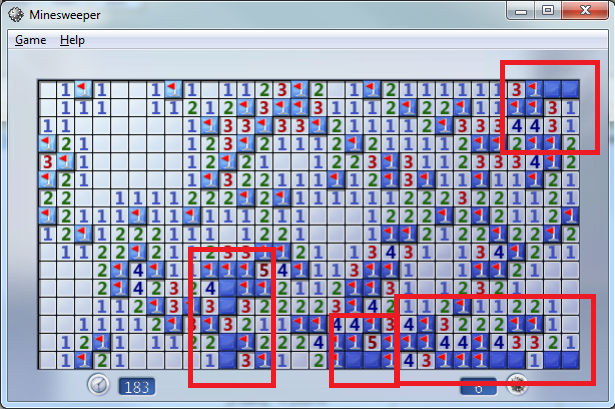
Someone asked what was his probability to win in this situation?
This is an interesting problem and I'll be curious to know an efficient solution.
So far, I wanted also to generalize, with a simplification, we consider only:
- pairs of blocks such as the one on top right, and model them with a binary variable which value is the presence of the mine
- twin pairs, such as the one on bottom left, which is a couple of pairs linked together, the knowledge of one value of a pair gives the value of the other pair and vice versa
So we omit groups of more than 2 pairs linked together, for simplicity.
Now in this simple example, we have 2 single pairs and 2 twin pairs, let's denote twins with binary variables: $A_1, A_2$, and the other one with $B_1, B_2$ and the other single pairs with $C$ and $D$
So we could think the probability is $(\frac 1 2)^4$ but I'm not sure at all
The goal is to generalize with m twins pairs and n single pairs
